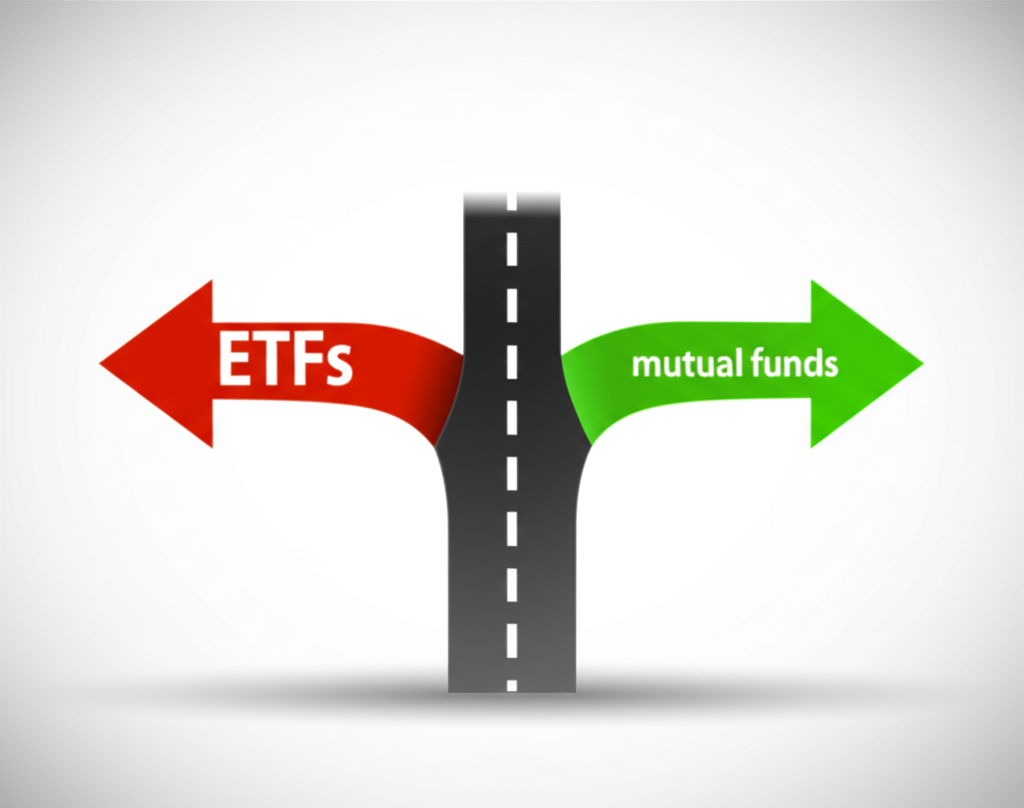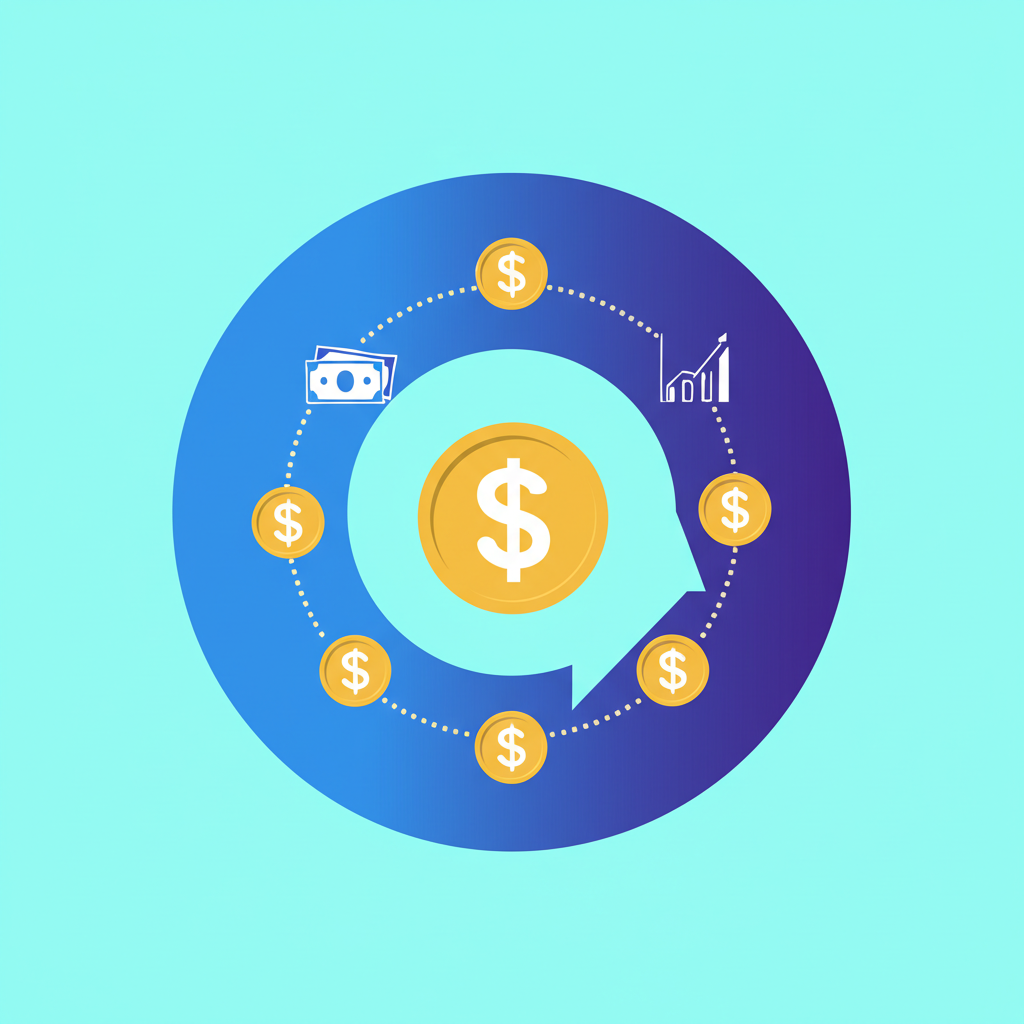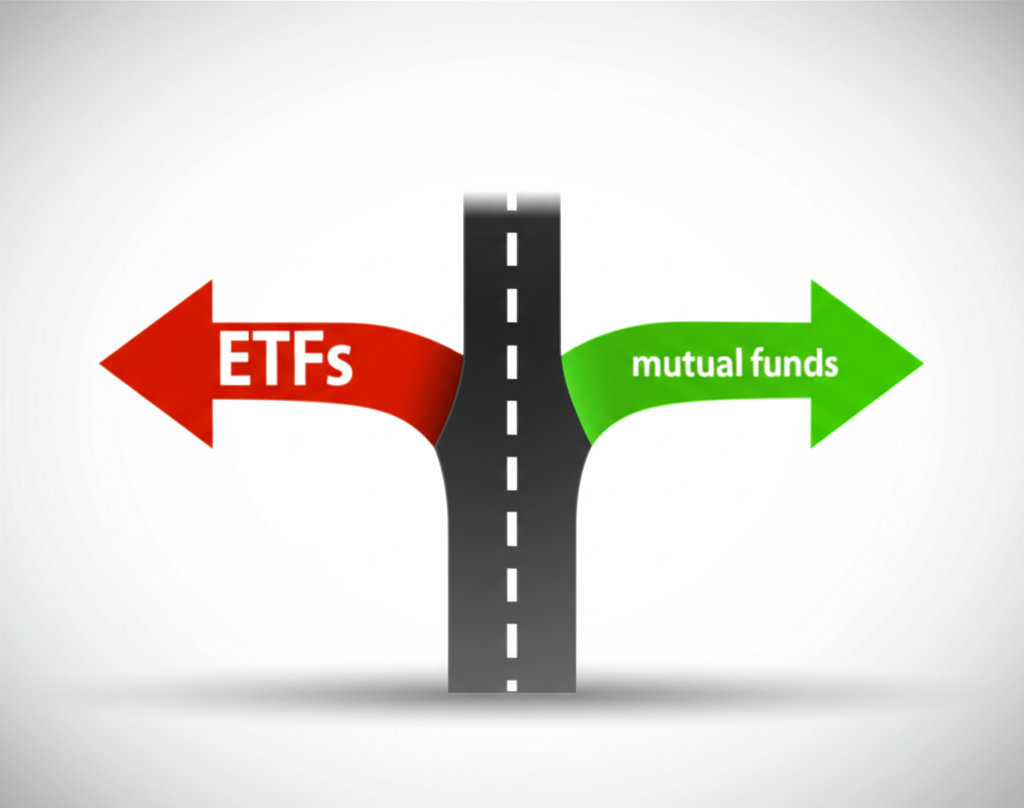Investing in fixed-income options presents challenges, particularly with shifting market dynamics. For investors in the United States aiming to refine their portfolios heading into 2025, grasping the differences between bond exchange-traded funds (ETFs) and bond mutual funds proves essential. These tools both enable diversification and steady income, yet their structures, fees, and tax treatments can profoundly affect overall performance.

This in-depth analysis breaks down these options, offering a direct comparison suited to the U.S. landscape. We’ll explore their core distinctions, evaluate strengths and weaknesses, and guide you toward selecting-or blending-them to match your objectives and approach for the coming year.

What Are Bond ETFs? Building Blocks for U.S. Investors
Bond ETFs pool together a variety of bonds-like those issued by the government, corporations, or municipalities-and trade on stock exchanges just like shares of companies. Their values shift with real-time supply and demand, rather than relying solely on a daily net asset value calculation.
U.S. investors find bond ETFs appealing for good reason. The ability to trade them anytime during market hours delivers unmatched flexibility for getting in or out of positions swiftly. They usually carry slimmer expense ratios than actively run mutual funds and shine in tax efficiency thanks to an in-kind exchange process during redemptions. Plus, with daily visibility into holdings, you get a straightforward picture of your bond allocations.
What Are Bond Mutual Funds? The Classic Path Explained
Bond mutual funds gather capital from many investors to create managed collections of bonds. Shares come straight from the fund provider, priced at the net asset value set once daily after trading ends.
These funds split into active and passive varieties. Active ones rely on managers to pick and trade bonds, striving to beat benchmarks through savvy choices. Passive versions mirror bond indexes without much intervention. Many U.S. investors lean toward mutual funds for their hands-off nature, enjoying perks like automatic dividend reinvestment and expert oversight.
Bond ETFs vs. Mutual Funds: Key Comparisons for U.S. Portfolios in 2025
For smart portfolio decisions in 2025, U.S. investors need to scrutinize how these vehicles differ in operations and finances.
Trading and Liquidity: Anytime Access Versus Daily Closes
The way trades happen marks a primary divide. Bond ETFs let you buy or sell at prevailing market prices all day long, much like equities, delivering instant liquidity. This suits those eyeing swift responses to news or tactical timing.
Bond mutual funds, by comparison, process orders only at the end-of-day net asset value. No matter the submission time, execution happens at that fixed price. This setup offers U.S. investors less precision on entry costs, which can frustrate active participants.
Cost Structures and Fees: Breaking Down Expense Ratios, Commissions, and Spreads
Fees quietly chip away at gains over years. Expense ratios apply to both, as ongoing percentages of assets. Passive bond ETFs and index mutual funds usually edge out actives on this front with tighter costs.
Other expenses vary. ETF trades often incur broker commissions per transaction, akin to stock deals, alongside bid-ask spreads-the gap between buy and sell quotes. Mutual funds might tack on sales loads: upfront fees for purchases or deferred ones for sales, on top of the expense ratio. U.S. investors must weigh these to gauge real after-fee yields, especially since many brokers now waive ETF commissions, narrowing the gap.
Tax Efficiency: Handling Capital Gains and Distributions in the U.S.
In taxable U.S. accounts, bond ETFs frequently outperform on taxes. Their in-kind redemptions mean big players swap shares for actual bonds, sidestepping cash sales that spark taxable events for everyone else.
Bond mutual funds, however, routinely pass capital gains to owners yearly-taxable right away, even without personal sales-often from portfolio tweaks or outflows. For 2025 U.S. tax returns, this can inflate bills substantially, positioning ETFs as the smarter pick for taxable long-haul holds. Source: Investor.gov
Diversification and Portfolio Management
Each format spreads risk effectively, granting broad bond access via one purchase. Skipping the hassle and expense of solo bond buys, they cover maturities, credits, and issuers effortlessly-for instance, blending Treasuries with high-yield corporates for balanced exposure.
Adjusting allocations differs. ETFs’ all-day trading enables precise tweaks, ideal for dynamic strategies. Mutual funds fit better with steady, infrequent shifts, supporting a core holding mindset.
Transparency and Holdings Disclosure
Bond ETFs lead in openness, revealing complete portfolios each day online. This real-time insight lets U.S. investors assess risks-like duration or sector tilts-on the spot.
Actively managed mutual funds share details less often, say quarterly, to shield strategies. While understandable, it leaves participants with dated views of assets, potentially complicating oversight.
Minimum Investment Requirements
Bond ETFs welcome small starters, often needing just one share’s worth-perfect for budding U.S. investors building fixed-income stakes gradually.
Mutual funds typically demand larger upfront sums, from hundreds to thousands, though some no-minimum options exist via platforms. This can deter those with modest beginnings.
| Feature | Bond ETFs | Bond Mutual Funds |
|---|---|---|
| Trading | Intra-day (like stocks) | End-of-day NAV |
| Pricing | Market price (supply/demand) | Net Asset Value (NAV) |
| Typical Fees | Expense ratio, brokerage commissions, bid-ask spread | Expense ratio, potential sales loads (front/back-end) |
| Tax Efficiency (US) | Generally more tax-efficient (in-kind redemptions) | Can trigger capital gains distributions |
| Transparency | Daily disclosure of holdings | Periodic disclosure (e.g., quarterly) |
| Minimum Investment | One share (very low) | Often requires a minimum dollar amount |
| Management Style | Mostly passive/index-tracking | Can be active or passive/index-tracking |
Pros and Cons: Weighing Options for U.S. Investors in 2025
Grasping differences sets the stage, but weighing upsides against downsides sharpens choices for 2025.
Advantages of Bond ETFs for U.S. Investors
- Lower Costs: Passive index trackers often run with reduced expense ratios, preserving more returns.
- Tax Efficiency: In-kind redemptions minimize taxable events in non-retirement accounts versus mutual funds.
- Flexibility: All-day trading empowers precise timing amid volatility.
- Transparency: Daily holdings updates clarify exposures clearly.
- Accessibility: Starting with a single share opens doors for all budget levels.
Disadvantages of Bond ETFs for U.S. Investors
- Trading Costs: Commissions and spreads accumulate with high activity, though many brokers eliminate the former.
- Tracking Error: Deviations from indexes can subtly affect results, especially in niche bond areas.
- Liquidity Risk: Obscure ETFs may widen spreads during turbulence, hiking effective costs.
- Long-Term Pitfalls Without Oversight: Poorly selected ETFs might amplify risks like rate hikes, credit defaults, or inflation erosion absent a manager’s adjustments-demanding self-education on exposures, unlike guided mutual funds.
Advantages of Bond Mutual Funds for U.S. Investors
- Professional Management: Experts in active funds navigate bonds to seek outperformance amid complexities.
- Ease of Use: Suited to passive strategies, with seamless auto-invest and dividend handling.
- No Trading Fees: Skips commissions, though loads or redemptions might apply.
- Convenience: Direct purchases from providers streamline entry.
Disadvantages of Bond Mutual Funds for U.S. Investors
- Higher Fees (Potentially): Active versions carry steeper ratios; loads further dent initial gains.
- Less Tax Efficient: Yearly gain payouts burden taxable holders unexpectedly.
- Limited Trading: Single daily pricing curbs timing control.
- Minimum Investments: Entry thresholds may exclude smaller accounts.
| Aspect | Bond ETFs | Bond Mutual Funds |
|---|---|---|
| Best For | Cost-conscious, tax-efficient, active traders, specific market exposure | Hands-off investors, professional management, automatic investing |
| Worst For | Frequent traders (due to commissions), those seeking active management without self-direction | Taxable accounts (due to capital gains), cost-conscious investors (due to loads/high ER) |
When to Choose Which for Your U.S. Investment Strategy in 2025
No single option rules; suitability hinges on goals, risk appetite, and circumstances.
Bond ETFs Are Ideal If…
- Low costs and tax perks matter most, particularly in taxable brokerage setups.
- You value day-long trading to pivot on developments.
- Daily holdings details inform your decisions.
- Targeting precise bond niches-like short-term municipals-fits your plan.
- Self-managing trades aligns with your style.
Bond Mutual Funds Are Better If…
- Delegating to pros eases your involvement.
- A hands-off setup with auto-features appeals.
- Tax-sheltered vehicles like 401(k)s or IRAs host your investments, dodging gain taxes.
- Fund-company buys without broker hassles suit you.
Hybrid Approaches: Combining Both for Optimal U.S. Portfolios
Blending them often maximizes benefits for U.S. investors. Deploy cost-effective, tax-smart ETFs as taxable anchors for transparency and agility. In retirement accounts, tap active mutual funds for managerial edge and potential alpha in targeted sectors. This mix tailors efficiency and expertise across accounts.
Top Platforms for Diversified Investing in the United States (2025)
Selecting a solid broker unlocks bond ETFs, mutual funds, and wider diversification. Traditional U.S. firms provide ample access, but select global players enhance strategies with extra tools and markets. Below, we spotlight three platforms strong for U.S. users.
Moneta Markets: A Strong Contender for U.S. Diversification
U.S. investors chasing sharp conditions across assets will appreciate Moneta Markets. It delivers tight spreads and low commissions on forex, indices, and commodities-ideal complements to bonds for growth or protection. Platforms like MetaTrader 4 and 5 suit beginners and pros alike, backed by solid support. Holding an FCA license, Moneta Markets prioritizes security and regulation, letting U.S. clients expand beyond bonds into futures or globals from one hub for integrated hedging. Source: Moneta Markets Official Website
OANDA: A Reliable Choice for U.S. Traders and Investors
OANDA earns trust through its U.S. footprint and competitive edge, best known for forex but extending to versatile platforms with rich research and learning aids. Transparent fees and regulation appeal to those building full portfolios. U.S. users gain a dependable space for strategy management, including ETF access or market analysis affecting bonds.
IG: Global Reach with U.S. Investor Focus
IG impresses with vast markets and pro tools for advanced users, under tight oversight for safety. Educational depth aids market mastery. In the U.S., it emphasizes regulated fare like forex and options, enabling risk control or bond-pairing plays. Its infrastructure and learning focus make it a versatile pick for expansive U.S. strategies.
The 2025 Outlook for Bond Investments in the United States
Bond markets in the U.S. will stay fluid through 2025, shaped by Federal Reserve rate moves. Inflation trends, growth paces, and job data will sway yields-if cooling prices and steady expansion emerge, rates might hold or dip, boosting current bonds.
Stubborn inflation or robust economy could push rates up, pressuring prices. Geopolitics and budget policies add layers. U.S. investors must track these to align ETFs or funds with forecasts, blending vehicle traits with macro views. Source: Fidelity
Conclusion: Making Your Informed Decision for 2025 in the United States
For 2025 U.S. portfolios, bond ETFs versus mutual funds boils down to fit-not superiority. ETFs deliver thrift, tax smarts, and nimbleness for directed taxable investing. Mutual funds bring expertise and simplicity, thriving in retirement or low-touch scenarios.
Factor in your timeline, management preference, and tax setup when crafting fixed-income plans. Hybrids often yield the most balanced, effective diversification. Dig deep, or seek advisor input, to fuel enduring U.S. wealth growth.
What are the disadvantages of bond ETFs for long-term US investors?
While bond ETFs offer many advantages, long-term US investors should be aware of potential disadvantages. These include trading costs (commissions and bid-ask spreads) that can erode returns if traded frequently, and the potential for tracking error (where the ETF’s performance doesn’t perfectly match its underlying index). Additionally, if not carefully managed or understood, specific bond ETFs can expose investors to significant interest rate risk, credit risk, or inflation risk without the active oversight that an experienced mutual fund manager might provide to mitigate these factors. Investors need to be proactive in understanding the specific bond exposure of their chosen ETFs.
Which is better for long-term investing in the US: bond ETFs or mutual funds?
Neither bond ETFs nor mutual funds are universally “better” for long-term investing in the US; the ideal choice depends on your specific needs. Bond ETFs are often favored for their lower expense ratios and greater tax efficiency in taxable accounts, making them attractive for long-term growth. However, bond mutual funds, particularly actively managed ones, can be beneficial for investors who prefer professional management and a hands-off approach, especially within tax-advantaged retirement accounts where capital gains distributions are not an immediate concern. A hybrid approach often works best, leveraging ETFs for taxable accounts and mutual funds for retirement accounts.
What are the key tax advantages of bond ETFs for US investors?
For US investors, the primary tax advantage of bond ETFs lies in their unique “in-kind redemption” mechanism. When large investors redeem ETF shares, the fund typically distributes underlying bonds instead of selling them for cash. This process helps the ETF avoid realizing capital gains that would otherwise be passed on to shareholders as taxable distributions. In contrast, bond mutual funds frequently distribute capital gains from bond sales, which are taxable to shareholders annually, even if no shares were sold. This makes bond ETFs generally more tax-efficient for long-term holdings in taxable brokerage accounts.
Can Moneta Markets help US investors access bond ETFs or diversify their portfolios?
While Moneta Markets is primarily known for its competitive offerings in forex, indices, and commodities, US investors can leverage its platform for broader portfolio diversification. By providing access to a wide range of global instruments, Moneta Markets allows investors to complement their core bond ETF or mutual fund holdings with other asset classes for growth or hedging strategies. For those looking to implement advanced trading strategies or explore futures and specific ETFs available through their platform, Moneta Markets offers robust tools and competitive pricing. This makes it a strong choice for US investors aiming for a comprehensive and dynamic investment approach beyond just fixed income.
What should US investors consider regarding liquidity when choosing between bond ETFs and mutual funds?
Liquidity is a crucial consideration for US investors. Bond ETFs offer intra-day liquidity, meaning you can buy and sell shares throughout the trading day at market prices, similar to stocks. This provides flexibility for quick adjustments. Bond mutual funds, however, are priced and traded only once a day at their Net Asset Value (NAV) after the market closes. For investors who need the ability to react quickly to market changes or prefer precise execution timing, bond ETFs generally offer superior liquidity. For those with a “buy and hold” strategy, the end-of-day pricing of mutual funds may be sufficient.
Why do some bond ETFs have higher trading costs than others, and how can Moneta Markets help?
The trading costs for bond ETFs, specifically the bid-ask spread, can vary based on the ETF’s liquidity, the liquidity of its underlying bonds, and its trading volume. Less popular or highly specialized bond ETFs might have wider spreads, making them more expensive to trade. Moneta Markets, while not a direct ETF broker, can assist US investors by offering competitive pricing on other liquid instruments like forex and indices. This allows investors to allocate a portion of their portfolio to highly liquid assets with tight spreads on Moneta Markets, while carefully selecting the most liquid and cost-effective bond ETFs through a traditional brokerage for their fixed-income exposure, thus optimizing overall portfolio trading efficiency.



No responses yet